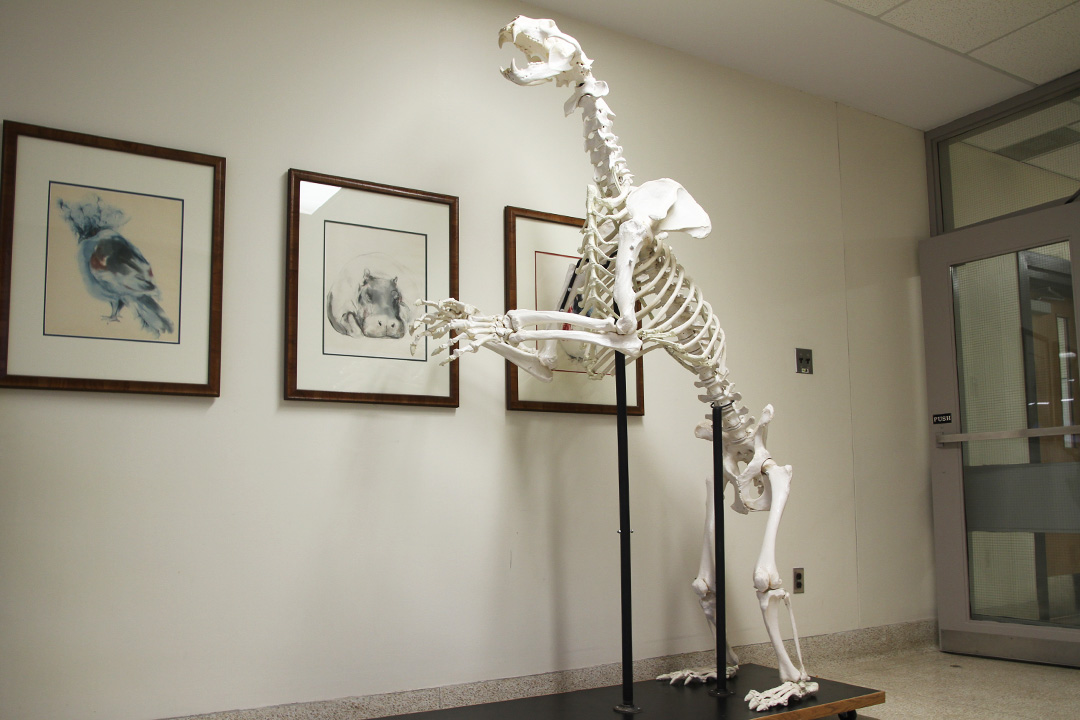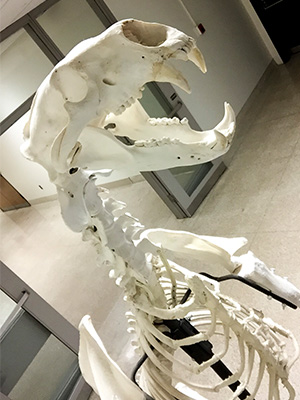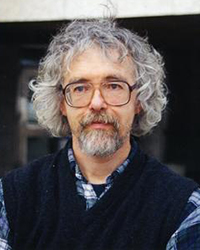
Interviews with inanimate objects: Polar bear skeleton
There are fascinating statues, artifacts and fun objects located all over the University of Saskatchewan campus. Get to know them a little better with this year’s On Campus News back page feature: Interviews with inanimate objects.
By Lesley PorterLocation: Western College of Veterinary Medicine

Where do you live?
I’m found in the Arctic region of the world—Northern Canada, Alaska, the Scandinavian Peninsula and Northern Russia. Canada alone is home to more than half of our population—you may have seen some in Churchill, Man., during their autumn migration until the ice freezes over.
I hear the Arctic is cold. How do you stay warm?
Adaptation, my friend! I have a thick layer of white fur to keep me warm on the chilliest of nights. Even my feet are covered in it. Beneath that is a thick layer of blubber for further insulation. It also helps keeps me buoyant when I’m in the water hunting for my dinner.
And what do you like to eat?
When it comes to the Arctic food chain, I sit at the head of the table and eat all the meat. Seals are my favourite and I can smell them a mile away—just kidding. It’s actually up to 30 miles away. One trick I use is to lay motionless near a hole in ice, and when I smell its breath, just reach in and dig in.
How big are you?
Pretty big—we are the largest living land carnivore, after all. When standing upright, females can span over two metres and males close to three. My skeleton alone is 88 inches tall!

How did you get here?
I was dedicated in honour of Malcolm A. Ramsay, a U of S professor and researcher who died in a helicopter accident on May 21, 2000. He and a colleague, Stuart Innes, were in Nunavut conducting research on the relationship between polar bears and seals. They were returning to their research station after a day of tagging polar bears when the helicopter suddenly crashed.
A renowned evolutionary biologist, Ramsay was known for his research on polar bears, specifically the ecology and physiology of female polar bears. I am very happy to be here at the U of S campus to pay homage to Professor Ramsay and the illuminating research he did with polar bears in his short life.

